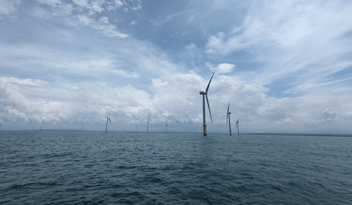
New generation anemometers to reduce yield prediction uncertainty
Sometimes the smallest changes on the smallest components can make a big difference – in this case, significantly benefiting power curve verification tests.
Anemometer technology is getting better, allowing it to improve in the classification system under the IEC, in turn, lowering uncertainties. This means that wind turbine owners have access to more accurate figures when investigating power curve performance on their assets.
The measurement campaign to perform a power curve verification test usually comprises a met mast with wind sensors which collects wind data over a long period, around 3-4 months.
But verifying the power available in the wind is complicated by a long range of conditions that will impact uncertainties in the collected data such as temperature, humidity and air pressure, so to improve accuracy requires a lot more input.
K2 Management’s prediction model includes 16 parameters, where the anemometer plays an important role.
We found that with use of the right technology and calculating models, overall uncertainties in annual energy predictions (AEP) in a P50 scenario will be reduced by at least 15%, depending on local average wind speed and the complexity in terrain.
In this example from a recent Asian onshore wind project, you can see that by using the newer-class anemometer, uncertainty levels are significantly lower than the anemometers used until now. Especially in low and middle wind speed areas.
| Average wind speed | Old class anemometer | New class anemometer | ||
| m/s | uncertainty % | uncertainty % | difference % point | difference % |
| 4 |
15,5 |
13,1 |
-2,4 |
-15,7 |
| 5 |
10,6 |
8,7 |
-1,9 |
-17,6 |
| 6 |
8,0 |
6,5 |
-1,5 |
-18,6 |
| 7 |
6,4 |
5,2 |
-1,2 |
-18,3 |
| 8 |
5,2 |
4,3 |
-0,9 |
-18,1 |
| 9 |
4,5 |
3,7 |
-0,8 |
-17,0 |
| 10 |
3,9 |
3,3 |
-0,6 |
-15,0 |
| 11 |
3,5 |
2,9 |
-0,6 |
-16,1 |
Source: K2 Management
Talk to us through the channels below if you want to understand how we can help you to optimize your wind measurement campaign...



